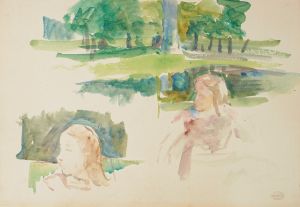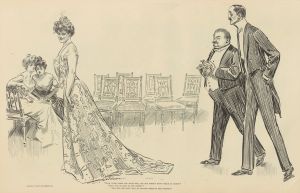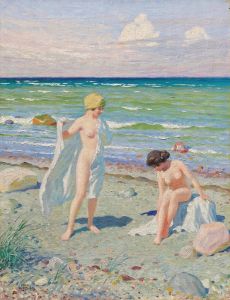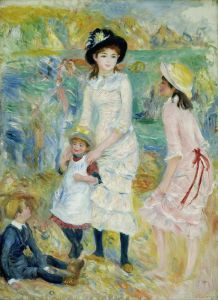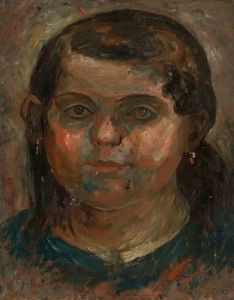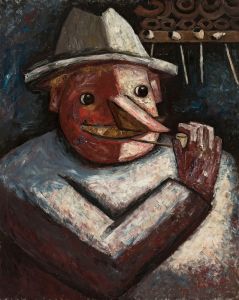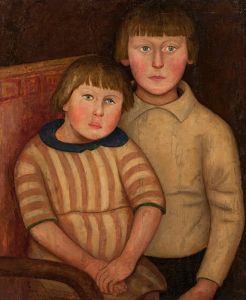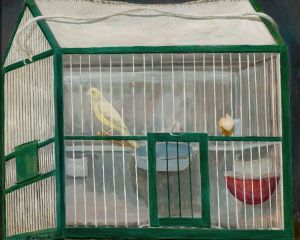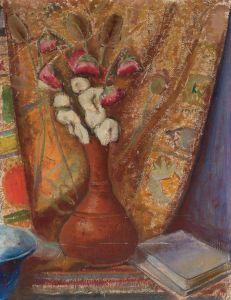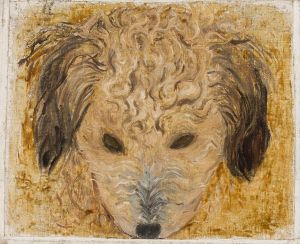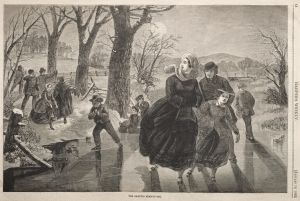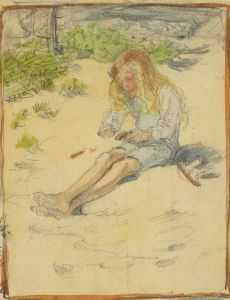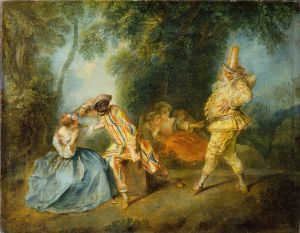
Children on a road
A hand-painted replica of Tadeusz Makowski’s masterpiece Children on a road, meticulously crafted by professional artists to capture the true essence of the original. Each piece is created with museum-quality canvas and rare mineral pigments, carefully painted by experienced artists with delicate brushstrokes and rich, layered colors to perfectly recreate the texture of the original artwork. Unlike machine-printed reproductions, this hand-painted version brings the painting to life, infused with the artist’s emotions and skill in every stroke. Whether for personal collection or home decoration, it instantly elevates the artistic atmosphere of any space.
Tadeusz Makowski was a Polish painter known for his unique style that combined elements of folk art and modernism. One of his notable works is "Children on a Road," which exemplifies his distinctive approach to capturing the innocence and simplicity of childhood through art.
Makowski was born on January 29, 1882, in Oświęcim, Poland. He initially studied classical philology at the Jagiellonian University in Kraków before pursuing his passion for art at the Academy of Fine Arts in Kraków. There, he studied under prominent Polish artists such as Jan Stanisławski and Józef Mehoffer. In 1908, Makowski moved to Paris, where he became part of the vibrant artistic community and was influenced by various avant-garde movements, including Cubism.
"Children on a Road" is a painting that reflects Makowski's fascination with the world of children, a recurring theme in his work. The painting depicts a group of children walking along a road, rendered in a style that blends realism with a touch of whimsy. Makowski's use of color and form is notable for its simplicity and clarity, capturing the essence of childhood with a sense of warmth and nostalgia.
Makowski's style is characterized by its use of geometric shapes and a muted color palette, often incorporating elements of Polish folk art. This approach is evident in "Children on a Road," where the figures are stylized yet expressive, conveying a sense of movement and life. The background is typically simplified, focusing attention on the children and their journey along the road.
Throughout his career, Makowski remained deeply connected to his Polish roots, even while living in France. His work often reflects a longing for the simplicity and purity of rural life, which he associated with his homeland. This connection to his cultural heritage is evident in "Children on a Road," where the depiction of children in a rural setting evokes a sense of nostalgia and timelessness.
Makowski's work gained recognition during his lifetime, and he exhibited in various prestigious venues, including the Salon d'Automne and the Salon des Indépendants in Paris. Despite his success, Makowski remained somewhat of an outsider in the art world, maintaining a unique style that did not fully align with any single movement.
"Children on a Road" is a testament to Makowski's ability to capture the essence of childhood with simplicity and depth. The painting invites viewers to reflect on their own experiences of childhood and the universal themes of innocence and exploration. Makowski's work continues to be celebrated for its emotional resonance and artistic innovation, securing his place as a significant figure in the history of Polish art.
Tadeusz Makowski passed away on November 1, 1932, in Paris, leaving behind a legacy of work that continues to inspire and captivate audiences. His paintings, including "Children on a Road," remain cherished for their ability to convey the beauty and simplicity of everyday life through the eyes of a child.





